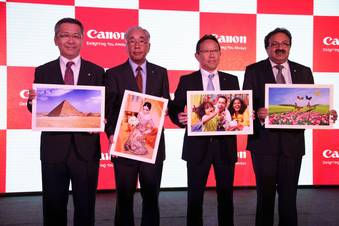
Category Archives: news


Vikram Bawa becomes the first Indian to be nominated to International Fashion Film Awards
Vikram Bawa’s fashion film ‘The Long Show’
has been nominated for the International Fashion Film Awards (IFFA) 2014 to be
held in Los Angeles, USA, from July 24th to July 26th, 2014.
The film has been nominated in two
categories – Best Art Direction and Best Music Nomination. This is the first
time an Indian photographer/film maker has been invited and nominated at these
prestigious awards.
‘The Long Show’, made for his friends, renowned
fashion designers Falguni & Shane Peacock is being screened at the ongoing La
Jolla Fashion Film Festival, USA, with the presentation of the IFFA in the 500
seat theatre at the Museum of Contemporary Art in La Jolla, California.
Speaking about the nomination, Bawa said, “It’s an honour to be nominated amongst other prestigious nominations along with some of the biggest photographers, film makers and artists like David Zimmerman, Ellen Von Unwerth, Nadav Kander.”
He added, “It is the world’s largest gathering of fashion filmmakers with Hollywood insiders, fashion media, bloggers from around the world, Industry Networking, Panel Discussions & Seminars, Red Carpet and press receptions, Awards and After Parties and is known as the Cannes of fashion films. Only the top 1% of fashion films around the world are shown at the Festival. I hope to make India proud.”

AFP launches World Cup 2014 photo exhibition in Indonesia

Sandisk announces USB designed in partnership with Romero Britto now available across India
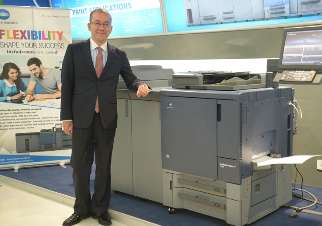
Konica Minolta appoints Yuji Nakata as the new MD

M.Ganges by Yoshihiko Ueda
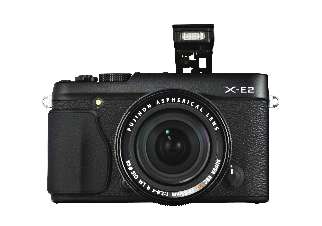
Fujifilm India announces the new FUJIFILM X-E2 interchangeable lens camera
Fujifilm India has announced the launch of FUJIFILM X-E2, a premium interchangeable lens camera with the latest APS-C X-Trans CMOS II sensor and world’s fastest AF speed.
Rohit Pandit, EVP- Sales & Marketing, Fujifilm India said, “After the success of X-E1 in the Indian market, I am delighted to announce this new X-E2 camera which offers many advance features to become a delight of the professional photographers.”
Building on the global success of the acclaimed FUJIFILM X-E1, awarded 2013’s Best Expert CSC by the Technical Image Press Association, the X-E2 is intended to take image quality to a dynamic new level that is comparable with full-frame cameras.
Fujifilm informed that the camera has the world’s fastest AF speed of 0.08 seconds. It features 16.3 million pixels APS-C sized X-Trans CMOS II Sensor that incorporates an original colour filter array. The hybrid AF also combines phase detection AF and contrast AF to ensure accuracy when shooting low-contrast subjects and dark scenes.
The X-E2 is available in solid black or two-tone black and silver, and is priced at Rs. 76,999 for body and Rs. 1,09,999 with XF18-55mm kit lens.
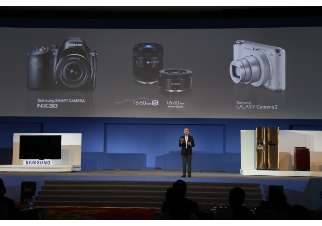
New camera, smartphone and lenses unveiled at Samsung Forum 2014
Samsung introduces the NX30 CSC featuring a 20.3megapixel APS-C CMOS sensor with NX AF System II for fast and accurate focusing. The NX 30 has a fastest shutter speed of 1/8000sec. With 9 fps. 3 inch super AMOLED swivel touch display. The nx30 features NFC and WiFi which allows for sharing, remote viewing.
Samsung 16-50 mm F2-2.8 S ED OIS lens
Samsung’s first premium ‘S’ Series lens has a wide aperture opening (F2.0 at 16mm; F2.8 at 50mm). It features a Ultra-Precise Stepping Motor (UPSM)
With optical image stabilisation. The lens is splash and dust proof.
The forum also featured Samsung 16-50 mm F3.5-5.6 Power Zoom ED OIS lens is a light weight lens weighing in at 111g with silent auto focusing.
Samsung Galaxy Camera 2
Samsung revealed their smart camera with a 16 megapixel BSI CMOS Sensor with a 21x optical zoom. The Samsung Galaxy 2 also features a 1.6 GHz Quad- Core processor with a 2GB RAM and 2000mAh battery. Its loaded with a 4.8 inch HD Super Clear Touch LCD.
All products will be launched by feb end or early march.
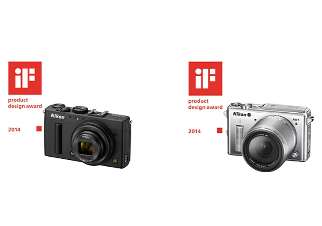
Nikon COOLPIX A and Nikon 1 AW1 receive Germany’s iF Product Design Award 2014
